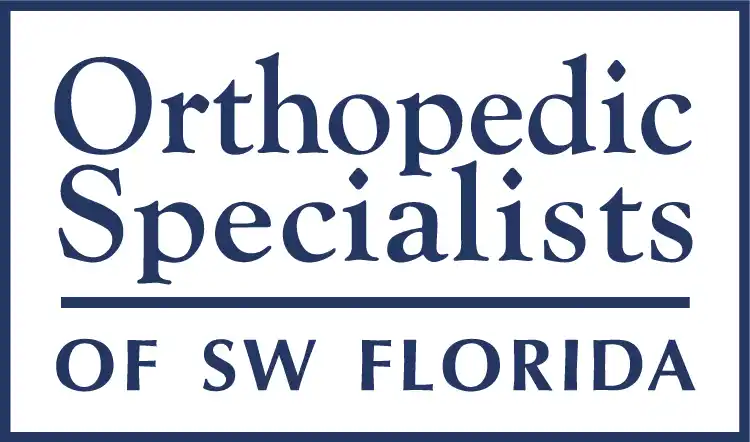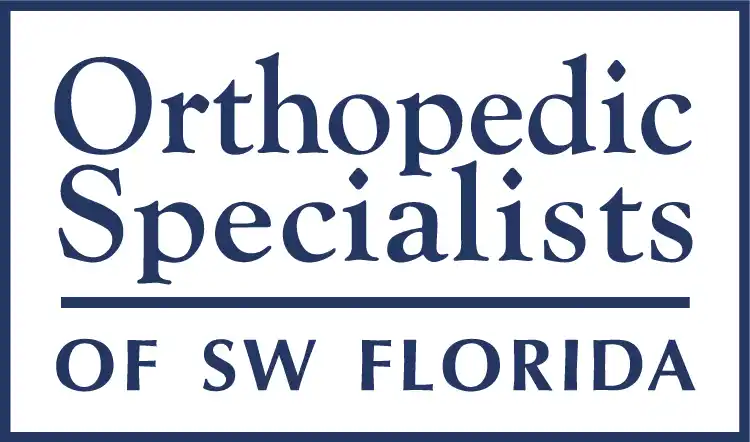Fractures—better known as broken bones—are among the most common injuries people experience. Whether from a fall, sports mishap, or accident, fractures can be painful, limiting, and, if left untreated, potentially damaging to long-term mobility. If you’re in Fort Myers, Florida and find yourself dealing with a suspected fracture, seeing a specialized provider makes all the difference. A fellowship-trained surgeon in Fort Myers can diagnose the type of break, recommend the right treatment, and ensure your recovery sets you up for lasting strength and function.
At Orthopedic Specialists of Southwest Florida (OSSWF), our expert surgeons treat fractures of all types using advanced diagnostic tools and both surgical and nonsurgical techniques. In this article, we’ll cover the five most common fractures and explain how our Fort Myers specialists treat them to get patients back to living pain-free.
Why Specialized Fracture Care Matters
Not all fractures are alike. Some are stable and can be treated with a cast, while others are complex and require surgery. Improper treatment or delayed care can lead to complications like stiffness, arthritis, nerve damage, or deformity. At OSSWF, our providers specialize in fracture care—combining precision, expertise, and rehabilitation to restore full function.
The 5 Most Common Fractures
1. Wrist Fractures
The wrist is one of the most common sites for fractures, especially the distal radius (the large forearm bone near the wrist). These injuries often occur from falling on an outstretched hand.
Symptoms:
- Severe wrist pain
- Swelling and bruising
- Difficulty moving or rotating the wrist
Treatment at OSSWF:
- Casting or splinting for simple breaks
- Surgery with plates, screws, or pins for unstable fractures
- Rehabilitation to restore strength and flexibility
2. Finger Fractures
Despite their size, broken fingers can seriously impact daily life. Sports injuries, workplace accidents, or falls are common culprits.
Symptoms:
- Swelling and bruising
- Pain and limited movement
- Deformity or bent appearance
Treatment at OSSWF:
- Splinting or buddy taping for stable fractures
- Surgery for misaligned or complex breaks
- Therapy to prevent stiffness and restore mobility
3. Clavicle (Collarbone) Fractures
The clavicle is a long bone connecting your shoulder to your chest, making it especially vulnerable to injury during falls or accidents.
Symptoms:
- Pain across the top of the shoulder or chest
- Visible lump or bump along the bone
- Trouble lifting the arm
Treatment at OSSWF:
- Immobilization with a sling for simple breaks
- Surgical fixation for displaced or complex fractures
- Physical therapy for regaining shoulder movement
4. Forearm Fractures
The forearm has two bones (radius and ulna), and both can break due to falls, sports, or high-impact injuries.
Symptoms:
- Intense pain and swelling
- Limited rotation of the wrist or arm
- Deformity in severe cases
Treatment at OSSWF:
- Casting or splinting for nondisplaced fractures
- Surgical plates or rods for unstable breaks
- Therapy to regain motion and prevent long-term stiffness
5. Hand (Metacarpal) Fractures
The metacarpals are the bones in your palm that connect to the fingers. These fractures are often caused by sports injuries, direct blows, or accidents.
Symptoms:
- Hand pain and swelling
- Weak grip strength
- Knuckle deformity or finger misalignment
Treatment at OSSWF:
- Splinting or casting for simple fractures
- Surgical fixation when alignment is compromised
- Therapy for full recovery of strength and dexterity
What to Expect at OSSWF
When you visit OSSWF in Fort Myers, Florida, our fracture care process typically includes:
- Comprehensive Evaluation: Reviewing symptoms and injury history.
- Imaging Tests: Digital X-rays, MRIs, or CT scans to confirm the break.
- Treatment Plan: Customized based on the type of fracture and your lifestyle needs.
- Follow-Up & Rehab: Ongoing care to ensure healing and prevent complications.
The Importance of Rehabilitation
Treatment doesn’t stop once the cast comes off. Rehabilitation is a critical step in fracture recovery. OSSWF offers specialized physical therapy to restore strength, flexibility, and coordination—helping patients return to work, sports, and daily activities as quickly as possible.
FAQs About Fractures
Q: How do I know if I need to see a hand surgeon for my fracture?
A: If the bone is visibly deformed, movement is restricted, or pain is severe, you should see a hand surgeon right away.
Q: How long does it take to heal from a fracture?
A: Most fractures take 6–8 weeks to heal, but recovery can vary depending on the location and severity of the break.
Q: Will I always need surgery for a fracture?
A: Not necessarily. Many fractures can heal with casting or splints, though complex or displaced fractures may require surgical repair.
Q: What happens if I don’t treat a fracture properly?
A: Without treatment, fractures can heal improperly, leading to deformity, chronic pain, or arthritis.
If you’ve suffered a fracture, don’t leave your recovery to chance. At Orthopedic Specialists of Southwest Florida (OSSWF), our fellowship-trained surgeons in Fort Myers, Florida provide expert care for all fractures. With advanced treatment techniques and comprehensive rehabilitation, we’ll help you heal correctly the first time.
Schedule your appointment today with OSSWF and take the first step toward a strong, pain-free recovery.


